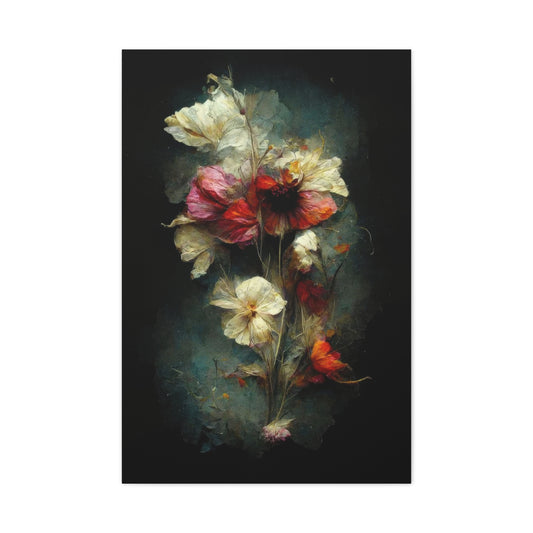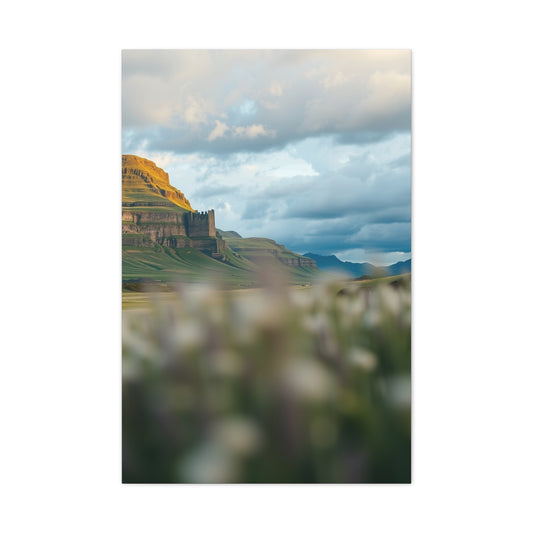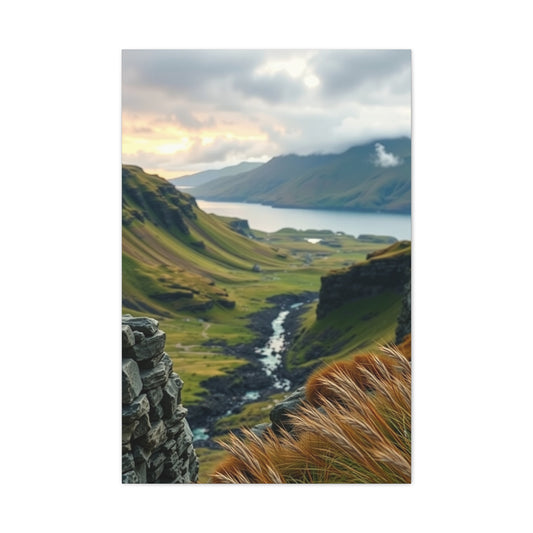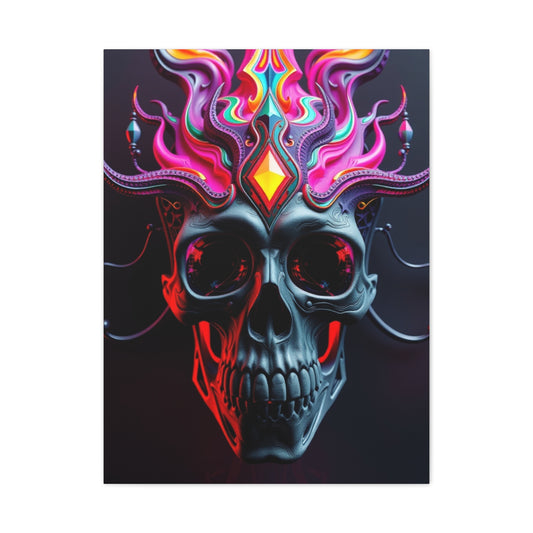Introduction to the Craft of Wood Engraving for Handmade Cards
Wood engraving is a captivating art form that has held its place in the world of fine art for centuries. This technique, similar to other relief printmaking methods like linocut, stands out due to its resilience, versatility, and timeless charm. One of the unique aspects of wood engraving is its ability to produce a large number of prints from a single block of wood. This inherent quality makes it an excellent choice for creating handmade cards, especially for special occasions like Christmas, birthdays, and weddings. When skillfully executed, a wood-engraved design can be printed year after year, preserving not only the aesthetic of the card but also the personal touch that makes each greeting special.
The magic of wood engraving lies in the process itself. Unlike other techniques, this craft involves the artist carving intricate designs into the surface of endgrain woodblocks. By using specialized tools known as burins, artists can create remarkably fine and detailed incisions that transform a simple piece of wood into a stunning design. What makes this method so appealing is its durability. A well-carved woodblock can withstand repeated use, allowing for multiple prints from the same engraving without losing its precision or quality. This longevity makes wood engraving a perfect choice for those wishing to create beautiful, high-quality cards that can be passed down for generations.
Whether you're an experienced artist or a beginner looking to delve into the world of wood engraving, the process of making handmade cards using this technique offers a rewarding experience. The steps involved in creating these cardsfrom selecting the right materials to engraving the design and printing the final cardare intricate, but with practice and patience, anyone can master this art form. In the following sections, we will explore the tools, materials, and techniques needed to create beautiful, hand-engraved cards that stand out and leave a lasting impression.
Tools and Materials for Wood Engraving
To embark on a wood engraving project for handmade cards, understanding the tools and materials you'll need is essential. While the process may seem complex at first glance, once you're familiar with the basics, you'll be able to tackle this craft with confidence.
The most critical material you'll need is the woodblock itself. For wood engraving, endgrain blocks are ideal because the fibers of the wood run vertically, allowing for cleaner and more precise cuts. This type of wood, such as maple, cherry, or boxwood, offers a smooth surface that allows for fine detailing while maintaining strength and durability. When selecting your woodblock, ensure that it's free of any cracks or imperfections that could interfere with the carving process. A well-prepared woodblock is crucial for achieving the level of detail that wood engraving is known for.
Next, you'll need a set of specialized tools, with the burin being the most important. Burins are small chisels with a sharp, V-shaped edge designed specifically for carving wood. They come in various sizes and shapes, each allowing for different effects, from fine, delicate lines to deeper, bolder cuts. Alongside the burins, you will also need a range of other tools such as gouges, knives, and a mallet to help with the finer aspects of the engraving process. These tools work together to allow you to carve intricate designs with precision and control.
Paper selection plays a significant role in the final result of your wood-engraved card. High-quality, thick paper or card stock is necessary to ensure that the ink from the print is absorbed correctly and doesn’t bleed or smudge. The paper should be able to withstand the pressure of the printing process while still allowing for clear and sharp details to emerge from the engraving. It's important to experiment with different types of paper to see how they interact with your specific engraving and ink.
Finally, the printing ink itself is a vital component of the process. There are several types of ink available for wood engraving, but oil-based inks are the most commonly used, as they provide rich, smooth coverage and dry slowly, allowing for more time to adjust the print. Water-based inks can also be used, though they dry more quickly, which can make the printing process slightly more challenging for beginners. Choosing the right ink for your project is crucial in achieving the desired finish on your cards.
Once you have gathered your materials, you can begin the exciting process of creating your handmade cards. Each stepfrom preparing the woodblock to the final printrequires patience, focus, and a keen eye for detail. As you gain more experience, you'll find that the tools and materials become an extension of your artistic expression, allowing you to create unique and beautiful designs that reflect your style and creativity.
Step-by-Step Process of Creating Handmade Cards with Wood Engraving
Creating handmade cards with wood engraving is a fulfilling and rewarding process that combines artistry with craftsmanship. While it may seem daunting at first, breaking it down into manageable steps makes it both enjoyable and achievable. Here, we will outline the fundamental steps involved in crafting a wood-engraved card from start to finish.
The first step in the process is designing your image. Whether you're creating a seasonal greeting, a birthday card, or a special thank-you note, it’s essential to plan out your design carefully. Drawing the design on paper beforehand helps to visualize the final product and allows you to refine any details before committing to the woodblock. Once you're satisfied with your drawing, you'll transfer the design onto the woodblock, often using carbon paper or tracing techniques to ensure an accurate transfer.
Once the design is in place, the next step is the engraving itself. Using the burins and other tools, you begin to carve away the areas of the wood that will not appear in the final print, leaving behind raised surfaces that will hold the ink. The key to a successful engraving is patience and precision. You’ll need to work slowly, ensuring that each cut is clean and well-defined. This part of the process can take time, especially if your design is intricate, but it is the most important step in determining the quality of the final print.
After the engraving is complete, it's time to prepare for printing. Begin by applying a thin, even layer of ink onto the surface of the engraved woodblock. This can be done using a roller or brayer, which ensures an even distribution of ink across the raised surfaces. Once the ink is applied, carefully place your paper on top of the block and apply pressure, either by hand or using a press. The goal is to transfer the ink from the raised areas of the woodblock to the paper, creating a crisp, clean image. After lifting the paper off the block, you should be left with a beautifully detailed print.
Finally, once your print has dried, you can finish your handmade card by folding the paper, adding any personal messages, or embellishing with additional designs if desired. The result is a unique, handcrafted card that carries the personal touch of wood engraving. Each print is slightly different, adding to the charm and individuality of your creations.
Wood engraving for handmade cards is a versatile and enduring craft that allows you to produce works of art that can be cherished for years to come. Whether you are creating a series of cards for a special occasion or designing a one-of-a-kind greeting, the process of carving, printing, and personalizing each card brings a sense of satisfaction and accomplishment. As you hone your skills and experiment with different designs and techniques, you'll find that wood engraving opens up endless possibilities for creativity and self-expression. The result is not just a card, but a tangible, meaningful piece of art that will resonate with those who receive it.
Understanding the Essential Materials for Wood Engraving
To achieve a successful wood engraving, one must first familiarize oneself with the key materials that contribute to a high-quality result. The foundation of any wood engraving is the woodblock, and selecting the right type of wood is crucial to the overall outcome. A typical choice among artists is endgrain wood, which features a dense, even surface that is ideal for intricate and detailed carving. This type of wood allows for fine lines and a more precise engraving, making it the go-to option for experienced engravers.
The quality of the wood is another important consideration. Hardwoods, particularly those derived from slow-growing trees, are favored because of their consistent grain patterns and durable nature. It’s essential to ensure the wood is free from imperfections or warping, as these flaws can negatively impact the engraving process and the final print quality. When selecting wood for engraving, the material should be checked for smoothness and the absence of knots, as these can interrupt the flow of carving and cause unwanted texture inconsistencies.
Moreover, ensuring that the wood is properly seasoned is vital. Fresh or green wood can lead to issues like cracking or shrinking during the engraving process. Seasoned, dried wood provides the stability needed to carve detailed designs without the risk of the block changing shape under pressure. The process of preparing the wood for engraving often involves sanding it smooth and cutting it to the desired size, ensuring the artist has a blank canvas to work on. As with any artistic medium, the care and attention given to selecting the right materials are key to achieving the desired outcome.
Tools and Techniques for Detailed Wood Engraving
When it comes to the tools used for wood engraving, the choice is just as important as the wood itself. The primary tools used by engravers are burins, which come in a variety of shapes and sizes. Among the most common types are the lozenge graver, square graver, and spitsticker, each designed to create a different type of line or texture on the wood.
The lozenge graver, known for its sharp, lozenge-shaped tip, is ideal for creating delicate, fine lines. Its precision allows the engraver to produce intricate, detailed designs, making it perfect for adding subtle variations in line thickness and texture. This tool can be used to create very fine, precise strokes, ideal for details such as facial features, hair texture, or small ornamental elements in a design.
The square graver, on the other hand, has a diamond-shaped face and is used for creating wider, more pronounced lines. Its ability to remove larger chunks of wood at a time makes it suitable for more dramatic and bold design elements. This tool is especially useful for creating outlines, deep contrasts, and other elements of a design that need to stand out visually. By adjusting the pressure and angle, the engraver can control the width and depth of the line, which adds variety and character to the engraving.
For fluid, graceful lines, the spitsticker is the preferred choice. This tool tapers to a fine point and is perfect for creating smooth, flowing curves. The spitsticker’s design allows the artist to achieve sweeping lines that contribute to the overall rhythm and movement of the piece. It is particularly useful in areas where fine, continuous lines are necessary to create the illusion of shading or texture.
An essential tool for advanced wood engravers is the tint tool, which is used to produce a series of parallel lines across the woodblock. These lines are used to represent mid-tones in the final print, adding subtle texture and depth to the design. The tint tool can be manipulated to create varying degrees of darkness or lightness, depending on the density and spacing of the lines. This allows for a high degree of shading control, making it particularly useful in works where nuanced textures are desired, such as in portraits or nature scenes.
Choosing the right engraving tool is determined by the complexity of the design and the desired final effect. Each tool offers a unique texture and line quality, so understanding how to use them effectively is a skill that comes with practice. The combination of different tools allows the artist to layer textures and refine details, ultimately creating a finished piece that is rich in visual complexity.
Inking and Printing Techniques in Wood Engraving
Once the engraving is complete, the next step is applying ink to the block and transferring the design onto paper. The choice of ink is critical in wood engraving, as the wrong ink can affect the texture and detail of the print. Oil-based relief ink is the preferred choice for most wood engravers, as it has the right consistency for adhering to the carved surface without disturbing the intricate details. Water-based inks, in contrast, can cause the wood to swell or warp, leading to a distorted or blurry print.
To apply the ink evenly, a roller, also known as a brayer, is used. The roller should be checked for its tackiness before use to ensure it distributes the ink evenly across the block. The ink should be applied in thin layers, and it’s important not to overload the roller to avoid thick, uneven coats of ink. Using a light, even touch with the roller ensures the ink adheres only to the raised areas of the carving, leaving the incised lines untouched and allowing them to remain crisp and clear in the print.
When it comes to paper selection, the type of paper used plays a significant role in the quality of the final print. The paper needs to be durable enough to handle the pressure of the burnishing process, which is used to transfer the ink from the block to the paper. Fine art papers, such as those used in traditional printmaking, are ideal because they are thick enough to absorb the ink without distorting the texture of the print. These papers are also sturdy enough to withstand the pressure required during the burnishing process without tearing or losing their form.
Choosing the right paper for wood engraving also involves considering its absorbency. The paper should be able to absorb the ink adequately to showcase the textures and details created by the engraving tools. A high-quality paper ensures that the print retains the richness and depth intended by the artist. Thin papers, although ideal for other forms of printmaking, may not hold up well to the intense pressure and ink application involved in wood engraving, leading to smudging or tearing.
Once the paper is selected and the ink is properly applied, the process of transferring the image begins. This is typically done using a hand press or through the technique of hand burnishing, where the artist applies pressure to the back of the paper to ensure a sharp, clear print. The pressure must be even and controlled to avoid smearing the ink or distorting the image. After the print is made, the paper is carefully peeled away, revealing the final image. It is essential to allow the print to dry properly to prevent any smudging.
In the world of wood engraving, patience and precision are key to creating high-quality prints. The materials and tools work together to bring the artist’s vision to life, with each component playing a vital role in achieving the desired effect. Whether working with intricate designs or bold, dramatic lines, understanding how to use these materials and tools effectively allows the artist to master the art of wood engraving and create prints that are rich in detail, texture, and artistic expression.
Designing Your Woodblock for Engraving
The art of wood engraving begins with creating a compelling design that will be transformed into a print. One of the most important aspects of wood engraving is understanding that the final print will be a mirror image of your design. This means that any text or elements with directional flow, like lettering, must be drawn in reverse. A common mistake for beginners is forgetting this essential step, resulting in printed designs that are flipped incorrectly. Therefore, it’s crucial to think through every detail with this in mind.
Beyond orientation, the success of your engraving hinges on how you consider light and contrast in your design. Wood engraving thrives on the interplay of light and dark elements and the careful use of negative space. Your design should incorporate varying degrees of contrast to create a dynamic composition. Dark areas should be highlighted with thick, bold lines, while the untouched surface of the woodblock will remain white, forming the lighter areas of the image. The balance between dark, mid-tone, and light elements can elevate your work and breathe life into your design.
The use of different line weights is key to establishing contrast and depth. Thin lines are ideal for delicate details, while broader strokes work well for more solid, blocky elements. For example, if your design includes a plant such as a Christmas cactus in a decorative pot, you can use finer lines to depict the intricate textures of the pot’s surface, while reserving the broader strokes for the foliage of the cactus. This combination will help create visual interest and a sense of dimensionality in the final print.
To prepare for the engraving process, you’ll need to transfer your design onto the woodblock. This can be done by either drawing directly onto the blackened surface of the block or using a transfer method. If you opt to use transfer paper, make sure your design is in reverse to avoid mistakes in the final print. Once the design is on the block, it’s time to start engraving.
Preparing the Woodblock for Engraving
Once your design is ready and transferred onto the woodblock, it’s time to prepare the block itself for the engraving process. The woodblock must be thoroughly cleaned and treated to ensure that the engraving process is smooth and the final print comes out crisp. The surface should be free from any debris or imperfections that could interfere with the cutting process.
The next critical step in preparing the block is to apply a layer of black ink or paint to the surface. This dark coating serves as a backdrop for your design, and it will make the lines of your design stand out more sharply during the engraving process. The blackened surface creates a high-contrast environment that highlights the precision of each cut, allowing the engraver to see the design clearly while working.
When applying the ink or paint, make sure it is evenly distributed over the surface. Uneven application could cause discrepancies in the clarity of the lines when you begin to engrave. Once the surface is coated, let the paint dry completely before moving on to engraving. This drying time ensures that the block is stable and ready for the delicate work ahead.
At this stage, ensure that your tools are in proper condition. Sharp, high-quality tools are essential for a clean engraving. Dull or damaged tools can result in jagged lines or even splintered wood, which can spoil your artwork. It’s always worth taking the time to inspect and sharpen your tools before beginning the engraving process.
The quality of the wood itself is equally important. Choose a woodblock that is both durable and smooth, allowing for precision when cutting. Many artists prefer using hardwoods like boxwood, but softwoods like pine can also work, depending on the desired effect. Whatever wood type you choose, make sure that the surface is as smooth as possible to avoid irregularities that may interfere with the engraving process.
Once the woodblock is prepped, you’re ready to dive into the delicate work of engraving your design.
The Engraving Process: Bringing Your Design to Life
Now that your design is transferred and your woodblock is prepared, it’s time to begin the actual engraving. Engraving requires patience, precision, and a steady hand. The most common tool used for wood engraving is the burin, a chisel-like tool with a sharp, angled blade. Holding the burin at the right angle is essential for achieving clean, crisp lines in your design. The tool should be held at a steady angle and should glide smoothly over the surface of the wood to create consistent cuts.
As you engrave, it’s important to focus on the depth and width of each line. If your lines are too shallow, they might not show up clearly in the final print. On the other hand, if you cut too deeply, the lines can become distorted or difficult to print. The key is to strike a balance, ensuring that the cuts are deep enough to be visible but not so deep that they interfere with the print’s quality.
Take your time to cut into the wood carefully, working with small, controlled motions. The more precisely you carve, the cleaner the final print will be. Be mindful of the wood grain as well, as cutting against the grain can cause the tool to catch or the wood to splinter. Always work with the grain for smoother cuts and a more consistent finish. For areas that require finer detail, you can use smaller, narrower tools to get into tight corners and intricate sections of the design.
Throughout the engraving process, it’s crucial to maintain a focus on the overall composition of the image. Remember, each line and stroke you make will contribute to the final print’s balance of light and dark areas. Some parts of your design may require more elaborate detailing, while others might need to be left more open or simplified to maintain visual clarity. Experimenting with various line thicknesses and patterns, such as cross-hatching or stippling, can enhance the depth and texture of your work.
Wood engraving is an art form that requires patience and meticulous attention to detail. Unlike other forms of printmaking, where a single mistake can often be corrected quickly, mistakes in engraving can be much harder to fix. It’s important to be patient and methodical, taking breaks when necessary to avoid rushing through the process.
One of the most rewarding aspects of wood engraving is the ability to create rich, tactile textures that add depth and dimension to your design. As you work through the piece, remember that each cut you make is a step closer to revealing the intricate, detailed artwork that will be transferred to paper. Whether you're engraving a complex botanical design or a more abstract piece, the process is both challenging and immensely satisfying.
Once your engraving is complete, you can begin the process of printing your design. This is where the true beauty of your work will shine, as the engraved lines are inked and transferred onto paper, creating a striking, high-contrast print. The final piece will capture the depth, texture, and detail you’ve crafted during the engraving process, showcasing the full range of your artistic vision.
The entire process of designing and engraving a woodblock is a rewarding journey that combines technical skill with creative expression. From the initial design concept to the final printed piece, each stage is an opportunity to refine your techniques and bring your artistic ideas to life. The beauty of wood engraving lies in the tactile nature of the medium, the depth of contrast, and the detailed textures that can be achieved with careful craftsmanship. Whether you are a seasoned printmaker or a beginner, the process of wood engraving offers a rich and fulfilling artistic experience that connects you to centuries of traditional printmaking.
Preparing Your Wood Engraving for the Printing Process
Once your wood engraving is complete, it’s time to transition to the printing stage. The first crucial step is rolling out your ink. You will need a smooth glass or perspex slab to achieve the best results. Begin by dispensing a small amount of ink onto the surface, ensuring that you don’t overload the slab. The goal is to have just enough ink to create a thin, even layer on the surface of the woodblock. Use a roller to spread the ink across the block, passing over the slab several times to evenly distribute it. This ensures that the roller picks up an even amount of ink and that the surface of the block is well-coated. Be mindful that excess ink can lead to smudges or a blotchy print, so take care to avoid over-applying.
As you roll out the ink, keep an eye on the consistency. Ideally, you want a smooth, thin layer that clings to the raised areas of the engraving. The ink should be spread evenly without any significant buildup or dry patches. This ensures that when you print, the design comes out crisp and clean. If the ink layer feels too thick, it may result in a blurry or muddy print. Adjusting the amount of ink used is essential for achieving clear lines and the fine details of your wood engraving. The next stage is crucialpreparing the block for printing and ensuring that every step is done with precision.
Printing Your Engraving: The Art of Transfer
Now that the ink is applied to your engraved woodblock, the next step is printing. This is where the magic happens, as you transfer the design onto your paper. Start by carefully positioning your paper over the inked woodblock. It’s important to align the paper in the right spot to avoid smudging or misalignment. Make sure that the paper is in full contact with the inked areas of the block to ensure the image transfers evenly.
To apply pressure, you’ll use a burnishing tool such as a spoon. Gently press down on the paper, moving the tool with even, consistent pressure across the entire design. The goal is to make sure that the paper comes into contact with the raised areas of the engraving so that the ink transfers properly. Don’t rush this process; patience is key here. By applying even pressure, you give the ink a chance to imprint into the fibers of the paper, which creates a clean and crisp image. It’s important to remember not to move the paper during this stage, as shifting could cause the image to blur or distort.
When printing on thicker paper, it can help to slightly dampen the paper beforehand. Moistening the fibers softens them, making it easier for them to absorb the ink and produce a richer, more vivid print. This added moisture helps to avoid any unnecessary cracking and ensures a smoother, more even print transfer. Depending on the paper thickness, the results will vary, but slight dampening often leads to better outcomes with a smoother finish and more consistent ink coverage.
After you have carefully burnished the entire design, it’s time to carefully lift the paper off the block. Take your time and lift it slowly to avoid damaging the print or the paper. As you remove the paper, the engraved design will appear on the surface, offering a beautiful and intricate representation of your artwork. At this stage, inspect your print closely to see how well the design has transferred. If the print looks slightly faint or uneven in some areas, it may require further burnishing or adjustments in the ink application. A little extra pressure or a second pass can often enhance the depth and detail.
Final Touches: Bringing Your Wood Engraving to Life
Once the paper is lifted, you’ll reveal your printed designa beautiful, tactile image that carries the unmistakable qualities of wood engraving. At this stage, the design should be sharp and detailed, with crisp lines and a subtle texture unique to the woodblock printing process. One of the most distinctive aspects of wood engraving is the tactile nature of the print. You should notice a slight texture in the paper where the ink has been pressed into the fibers, giving it a handmade, artisanal feel.
If your print isn’t as vibrant or detailed as expected, don’t be discouraged. It may simply require a bit more attention during the burnishing phase. Sometimes, pressing more firmly in certain areas or adjusting the ink consistency can make all the difference. As with any form of printmaking, it’s a matter of trial and error, and with experience, you’ll become adept at gauging just how much pressure is necessary and how to control the amount of ink for optimal results. It’s also important to note that the type of paper you use plays a role in the final print. Paper with a slightly rougher texture tends to capture the ink better and produce a more defined, rich print, while smoother paper may give a more refined look.
Wood engraving is a centuries-old art form, and mastering the process can take time. With consistent practice, you’ll become more attuned to the nuances of the technique, and your prints will improve. From fine art prints to unique greeting cards or personalized gifts, the possibilities are endless. Engraving your designs and turning them into prints allows you to express your creativity and produce something that’s both artistic and functional.
Creating handmade cards through wood engraving is an exceptional way to showcase your artistic skill while embracing a traditional and timeless technique. These prints can be a meaningful way to celebrate special occasions, birthdays, holidays, or simply offer a personalized and unique gift to loved ones. Whether you're creating a limited edition series or a one-off piece, the beauty and craftsmanship of wood engraving stand out as a sophisticated and remarkable choice.
The best part about working with wood engraving is the flexibility it offers. As you refine your technique, you may experiment with different ink colors, paper types, and even combining wood engraving with other printmaking techniques. Each print is an opportunity to learn and grow as an artist, allowing you to explore new creative possibilities and continuously improve your craft. The process itself is rewarding, and the result unique, handcrafted piece of art, something to be proud of.
With every card you create, you carry forward a rich tradition of craftsmanship and artistry. As your skills develop, you may begin to experiment with larger or more intricate designs, expanding the boundaries of what you can achieve. The sense of satisfaction that comes from creating something by hand cannot be overstated. Whether you're gifting your creations or sharing them with others, wood engraving offers an enduring, elegant way to bring art to life in print form.
The process of making wood-engraved prints whether for greeting cards or fine artis an exciting journey of experimentation, patience, and discovery. As you gain confidence in your ability to roll ink, press, and refine your technique, you'll find that your prints become increasingly sophisticated, reflecting your growing expertise. And in the end, you’ll have something truly special something personal, handmade, and a testament to the time and effort invested in each piece. Whether you're a beginner or an experienced printmaker, there’s always room for improvement and plenty of potential for new creative directions in this unique art form.




























